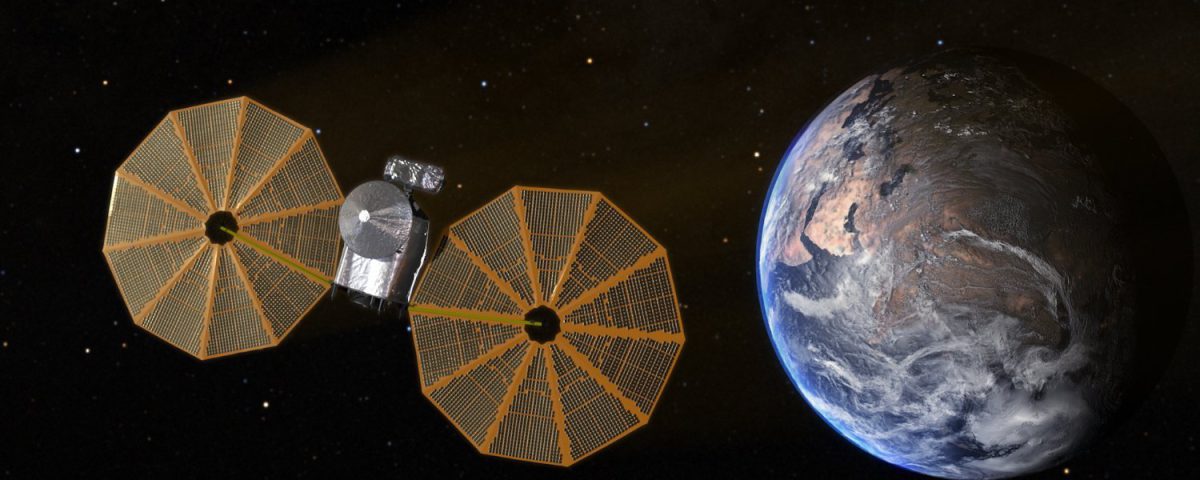Asteroid-Hunting NASA Spacecraft to Slingshot Around Earth Tonight. Watch it Live
Asteroid-Hunting NASA Spacecraft to Slingshot Around Earth Tonight. Watch it Live
The spunky Lucy mission will make a second gravity assist of our world tonight as it heads off on its hunt for the solar system’s origins.
Full Article
The asteroid hunting spacecraft Lucy will make its second gravity assist of Earth today, swinging by our pale blue dot on its way to a group of asteroids known as the Trojans. Lucy is a spacecraft on a 12-year journey into the distant solar system, where it will investigate a group of asteroids to better understand the origins of the outer planets and the birth of the solar system. But Lucy needs a little push to get there, and its upcoming flyby is set to occur tonight around 11:15 p.m. Eastern Time, according to to a NASA statement. It is a common assumption that once a mission launches, it is gone, never to be seen around these parts again. That is often untrue—spacecraft don’t carry much fuel and often leverage the gravitational pull of solar system objects to hasten their travel to (relatively) faraway parts of the universe. Tonight, Lucy will do exactly that, slingshotting around Earth to gain the speed it needs for its journey to explore the Trojan asteroids. As Lucy passes over Earth tonight, it will be traveling over 33,000 miles per hour (53,100 km/hr). Lucy will spend about 20 minutes traveling through Earth’s shadow and may become visible once it emerges on the other side. At its nearest approach tonight, Lucy may be visible to observers with a telescope in western Africa or eastern South America. It will be harder for observers in the eastern U.S. to see the probe because we will be on the dark side of Lucy’s solar panels, while those on the other side of the spacecraft will benefit from light glinting off the surfaces. The Virtual Telescope Project 2.0 is also hosting a live feed (available above) of the Lucy probe as it makes its swing by our world. Earlier this week, the European Space Agency’s BepiColombo spacecraft flew by Mercury for the fifth time, as the agency plans for the spacecraft’s arrival in the planet’s orbit in November 2026. This November, NASA’s Parker Solar Probe made its final flyby of Venus, using our next-door-neighbor’s gravity to fling itself to the surface of our star. Parker’s closest approach of the Sun is set to occur on Christmas Eve. This is actually Lucy’s second gravity assist of Earth; its first occurred in October 2022 and enabled the spacecraft to swing by the small asteroid Dinkinesh. The upcoming gravity assist will put Lucy into a six-year orbit that will send the spacecraft through the asteroid belt and to the Trojan asteroids, with a first encounter expected in 2027. The gravity assist will increase Lucy’s speed with respect to the Sun by over 16,000 miles per hour (25,750 kilometers per hour). Lucy’s next stop will be the main belt asteroid Donaldjohanson, which the spacecraft will pass on April 20, 2025. After that, it’s to infinity—erm, the asteroid belt—and beyond.
aerospace technologyasteroidsNASA
Get the best tech, science, and culture news in your inbox daily.
News from the future, delivered to your present.
Please select your desired newsletters and submit your email to upgrade your inbox.
The spacecraft survived scorching temperatures at a record proximity, and is expected to send details of its close call in the new year.
Parker Solar Probe will break its silence on Friday—that is, if it survived its closest approach to the Sun.
The Orion crew capsule is designed to jettison away from the SLS rocket in a launch abort scenario.
At 3.8 million miles from the Sun’s surface, Parker Solar Probe will be the closest a human-made object’s ever been to our host star.
The space agency is looking to maintain human presence in the microgravity environment as it transitions to commercial stations.
The otherworldly helicopter, with its 36 blades, is the size of an SUV—a major upgrade from Ingenuity’s four blades.
The Best Tech Gifts of 2024 ➜ We may earn a commission when you buy through links on our sites.
©2024 GIZMODO USA LLC. All rights reserved. Mode
Follow us
Mode
Follow us



